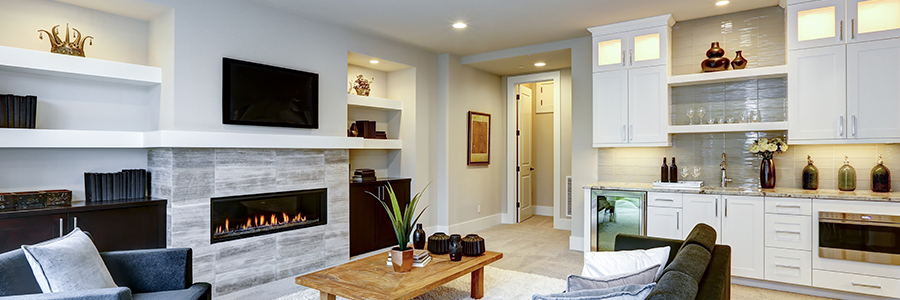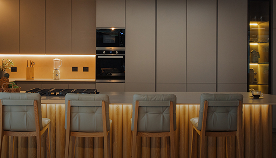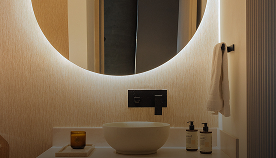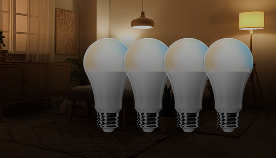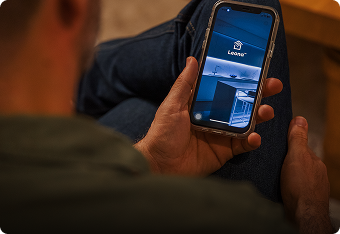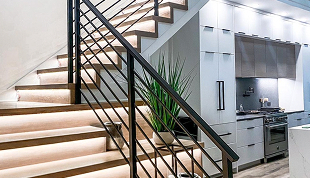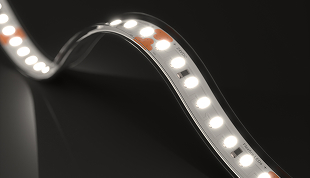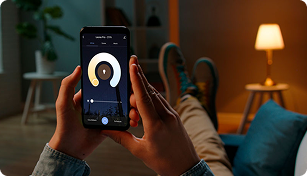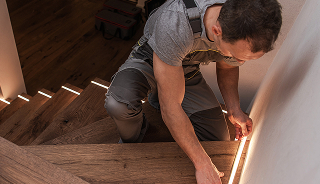What Is Accent Lighting? Your Guide to Home Decorative Light
Decorative light is a key element in today’s LED lighting design for homes. Find out how accent lights tie together your custom home renovation!
When you buy or rent your first home, you want to fill it with unique details. From your art collection to the designer tiles in the kitchen or the wood you chose for your cabinets, you love it when both your guests and you (re)discover its beauty as you walk through it each day.
That’s exactly what accent lighting is meant to showcase: the hidden corners and architecture of your home, the objects that make it yours, and the small gestures that—with a bit of thought and strategy—become big design statements.
In this article, we’ll walk you through all the basics you need to know about this type of lighting for your next remodel or new home lighting project.
Why Accent Lights Matter in Contemporary Modern Homes
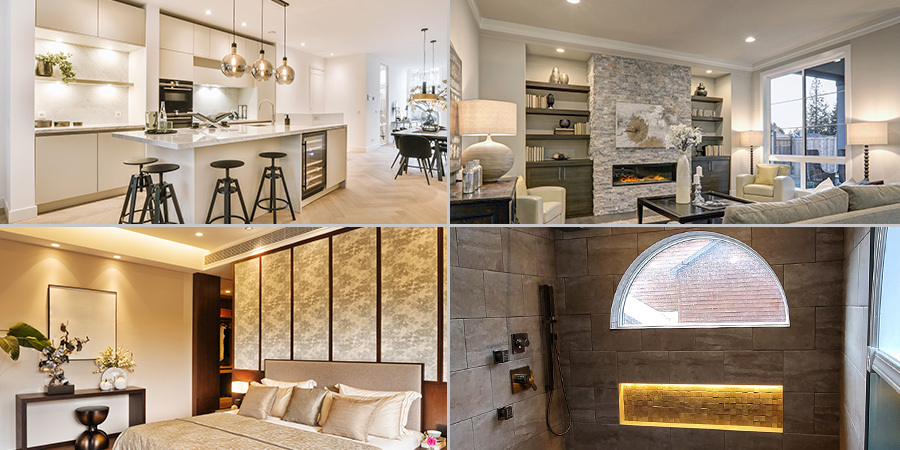
These days, it’s no longer enough for our house to be merely functional. Beyond lighting that serves a specific task or movement, both large and small modern home designs value the experiences and feelings that shape our lives and activities.
This means accent lights don’t just bring your home in line with the latest interior decoration trends. By drawing attention to key features—just as their name suggests, placing an accent on them—they also enhance everyday mood and routines in every room:
- In the living room, accent lights add a finishing touch by highlighting family photos, travel memories, or your favorite vase.
- In the bedroom, accent lights showcase the wallpaper behind your bed, nightstand essentials, or the texture of an upholstered headboard.
- In the kitchen, accent lighting can draw attention to a fruit bowl on the island, a vibrant backsplash, or your favorite china.
- In the bathroom, accents can bring out the beauty of your floor or shower tiles, vanity mirror, and other finishes.
- In the study or home office, accent lights can highlight your books and company records, stationery, or even the surface beneath your desk.
- And in outdoor areas, they bring your garden or patio to life at night—spotlighting furniture, plants, or a gazebo.
Accent Light Essential Features: What to Look For
As we’ve mentioned, accent lighting is defined by its ability to illuminate a specific object or area more brightly than its surroundings. To achieve this, your lights must meet certain quality, direction, and strength requirements:
1. Light Direction & Focus
These describe how your light is aimed and how focused its scope is.
Diffused vs Directional Lighting
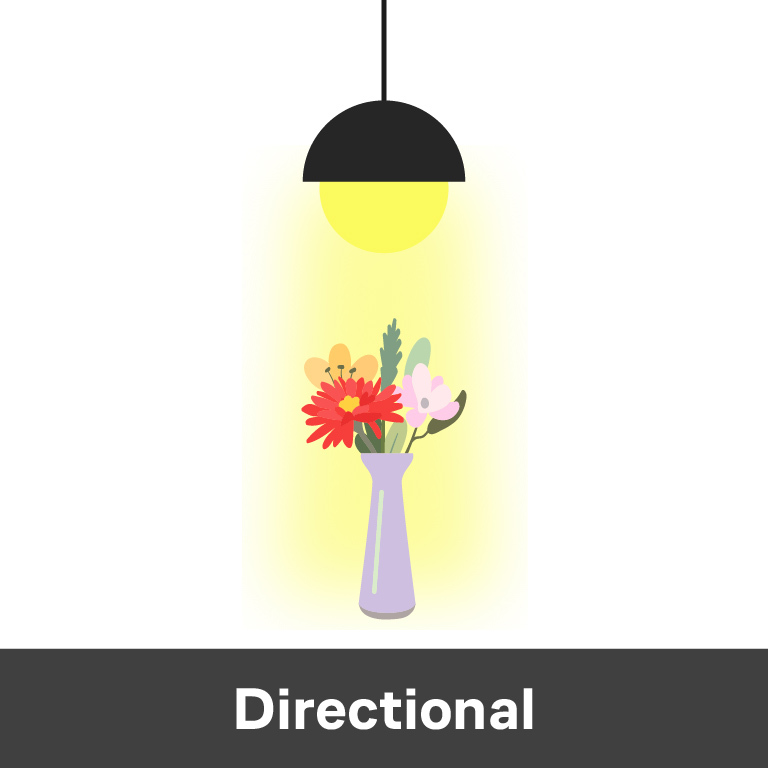
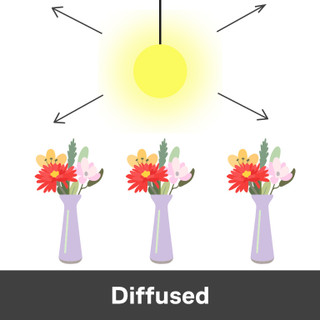
Accent lighting is almost always directional, meaning its light beam—the path of light that comes from your LED strips or bulbs, basically how and where the light shines—is aimed intentionally at a specific object like a flower arrangement or your favorite action figure.
However, accent lights can also be diffused, creating a softer, more distributed glow. This happens, for example, when you use a floor lamp to highlight a vintage velvet reading chair and its nook, illuminating the specific space indirectly while still drawing attention to it.
Beam Angle
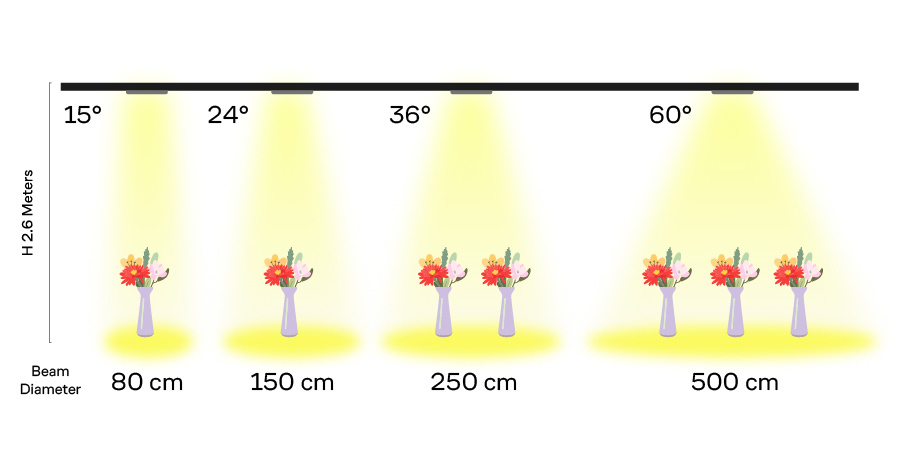
This refers to how widely or narrowly the light spreads from your lighting product. Accent lighting usually uses a narrow beam, similar to a spotlight, to draw focus and create a more dramatic effect—for example, highlighting a row of trophies with small pockets of shadow between each one.
It can also use a wider beam to softly wash light over a larger feature, like a textured wall or a statement painting. In this case, the goal isn’t to spotlight one exact detail, but to showcase the entire piece or surface. Wider beams are usually best for larger objects.
Downlight vs Uplight
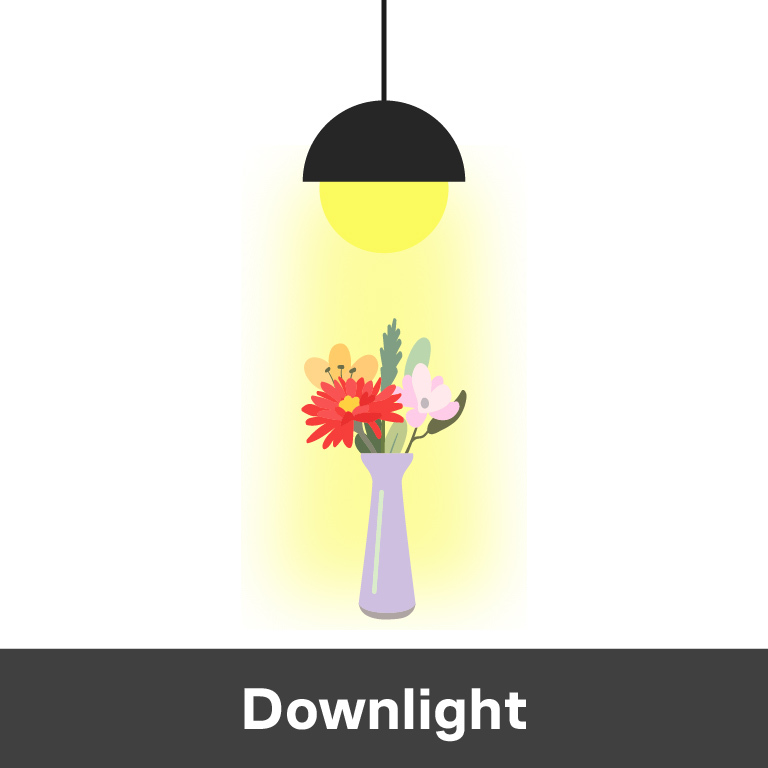

If you’re lighting a painting from the ceiling—like in the example above—or using LED lights in your pantry to shine down on spice tins, you’ll want accent downlighting, where the light beam points downward.
On the other hand, if you’re highlighting a column, tree, or sculpture, or have recessed lighting installed at the bottom of a shelf to illuminate your designer bags from below, you’ll need accent uplighting, where the light is directed upward from the floor or surface it’s mounted on.
Direct vs Indirect Light
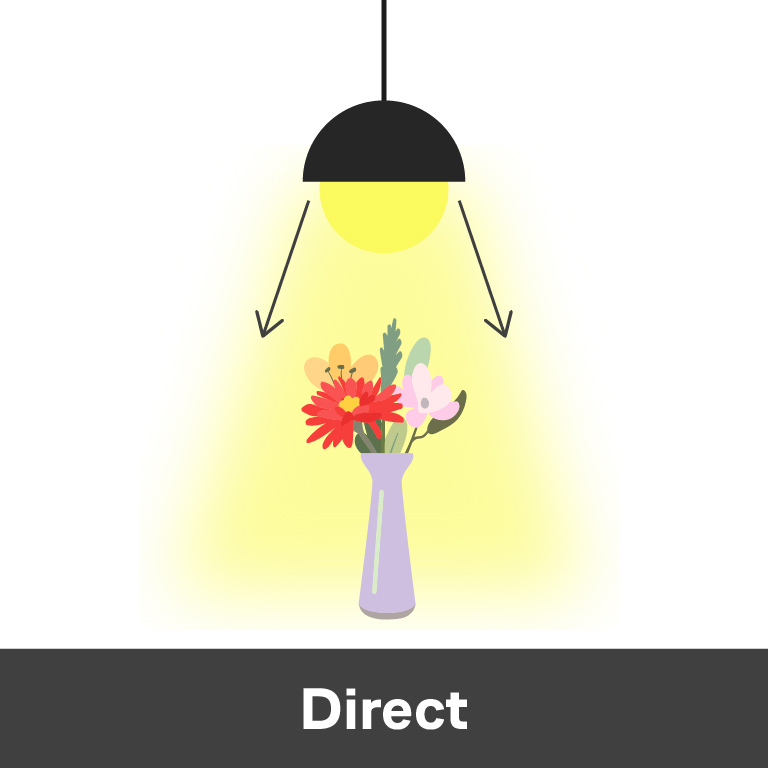
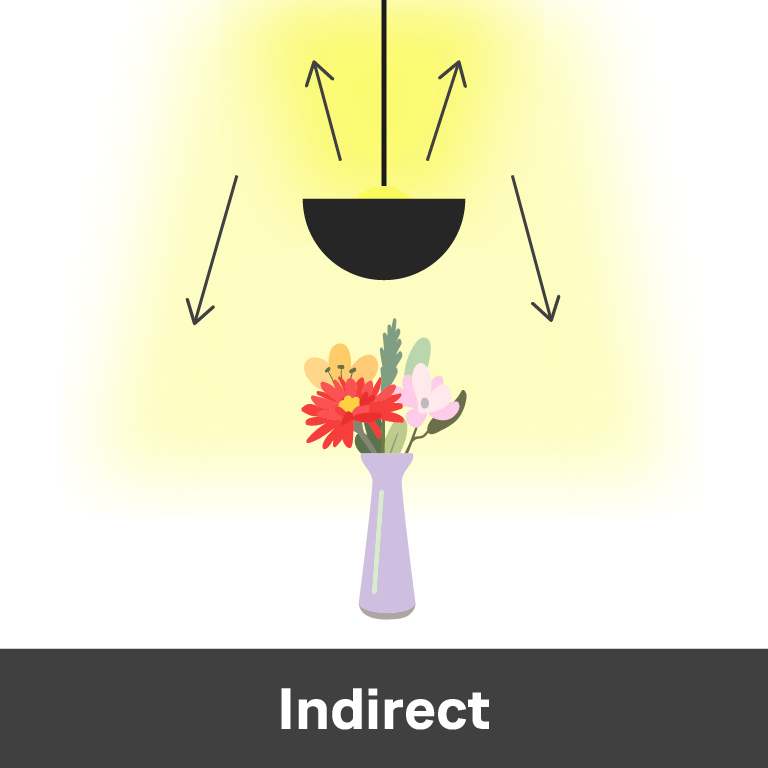
Accent lighting is typically direct, shining light straight onto the feature you want to highlight. However, it can be indirect when used to showcase an architectural feature by bouncing light off a surface—for example, cove lighting reflecting off the ceiling.
That said, when it comes to how you experience the space, most accent lighting ends up feeling indirect. Because these lights are aimed at objects or areas—not at you—they naturally keep glare out of your eyes and fill the room with softer glows. That’s what makes them so effective not just for highlighting details, but also for setting the right mood and bringing your space closer to your original vision through thoughtful layering.
2. Brightness Level & Contrast
These terms describe how intense your accent lights should be in your space and how much they should stand out from the background.
Lumens Comparison

Accent lighting needs to be a bit brighter than your room’s general (ambient) light, so your eyes are naturally drawn to what you want to highlight. A good rule of thumb is that it should be three to five times brighter than the surrounding light.
For example, while your main room lighting might provide a soft 100 to 300 lumens per square meter, your accent light might focus 300 to 1,500 lumens on a smaller area—about the brightness of a reading lamp aimed at a book.
That said, accent lights are gentle and still on the lower end of the brightness scale compared to architectural or industrial lighting, which can easily reach 2,000 to over 10,000 lumens. Accent lighting isn’t meant to blast the whole space—it’s there to create contrast, bring depth to your design, and add mood without feeling harsh or overwhelming.
High Contrast Lighting
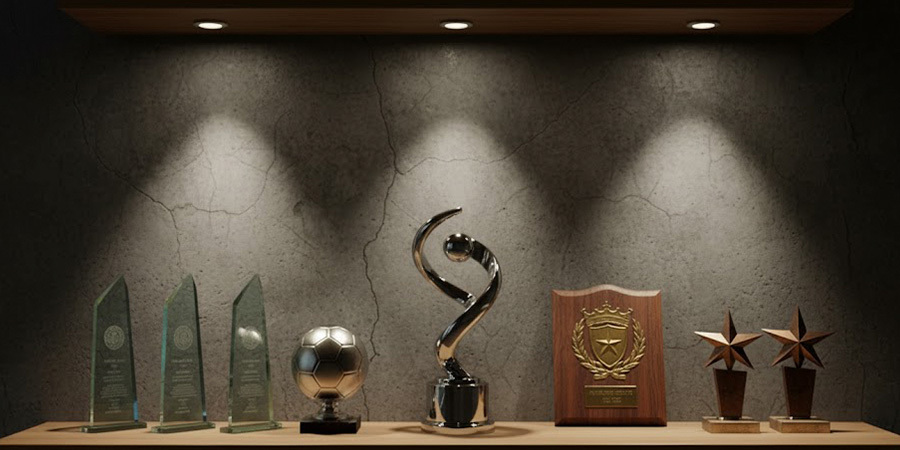
Remember the trophies we mentioned earlier? The mix of spotlights shining over their glossy gold finishes, combined with the surrounding shadows, creates a striking visual that’s not only pleasing to the eye but also naturally draws your attention to the display.
This effect—the contrast between a brightly lit object and its darker background—is what gives accent lighting its power. The goal is to maximize that contrast to provide your space with drama, depth, and visual appeal.
Dimmable Light

Being able to dim your accent lights through a smart home app or wall dimmer is key. It lets you not only play with a layered mood layout that complements the other lights in your space, but also save energy and give your possessions just the right amount of attention at any time of day.
For example, if your closet receives natural light from a skylight or window, you might want to boost the intensity on your designer handbags or heels so they still stand out and don’t get lost in the daylight, with the highlighting accent effect all washed out.
On the other hand, on occasions like a dinner party, there may be moments when you want to dim your accent lights. While guests are eating and chatting, you might keep your wine bottle accent display bright so it stands out. Later, if you dim or turn off the main lights for a romantic dance or piano music, do the same with your accents, letting them create a subtle mood glow.
3. LED Light Color & Quality
These describe the appearance of your accent lights themselves, which heavily influences the effect and the true look of the object or nook being highlighted.
Correlated Color Temperature
Most homeowners choose white light for their accent lighting because it makes surfaces, textures, and finishes stand out without distortion—this is especially important for detailed items we love to showcase, like hand-painted collectibles, textured materials, or glassware.
But which shade of white should you choose? To answer that, it helps to understand Correlated Color Temperature (CCT)—the measurement of a white light’s color tone. Lower Kelvin values give a warmer, more yellow light that’s relaxing, while higher Kelvin values produce a cooler, bluer light that’s more stimulating and suited for focus or work.
When it comes to accent lighting, each type of white light has its own particular effect:
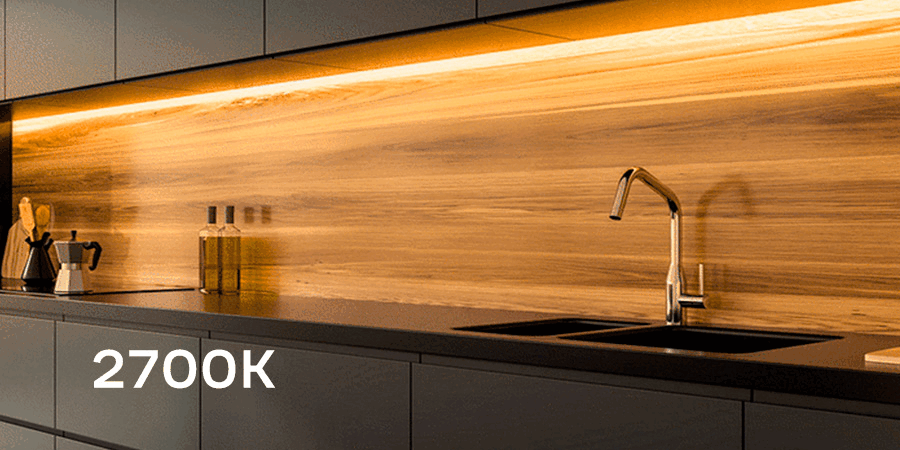
- Warm White Light (2700K-3500K): Used for illuminating art with earthy tones (like landscapes or portraits), and accenting wood, stone, or brick textures.
- Neutral White Light (3500K-4500K): It’s the perfect, balanced choice for showing the true colors of your items, and the one to go with if you can only pick a single CCT.
- Cool or Daylight White Light (4500K-6200K+): Ideal for spotlighting modern or minimalist art, black and white photography, and areas or text requiring higher visual clarity.
- Tunable White Light (2700K-6200K): Lets you shift between different white hues in your space, making decor changes and rearrangements effortless. This makes them an ideal choice for any home.
High-CRI Light
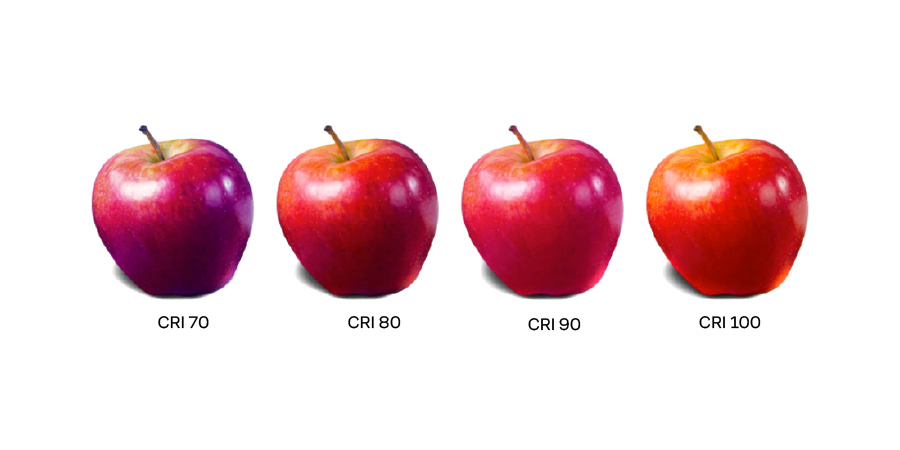
Color Rendering Index (CRI) is a measure of how accurately a light source reproduces the true colors of something. Since accent lighting is all about enhancing key features in your space, a high CRI is ideal. Your lights’ CRI should be above 80 for basic uses, or 90 or higher if you want premium-quality light that makes colors really pop.
RGB Color LED Lights
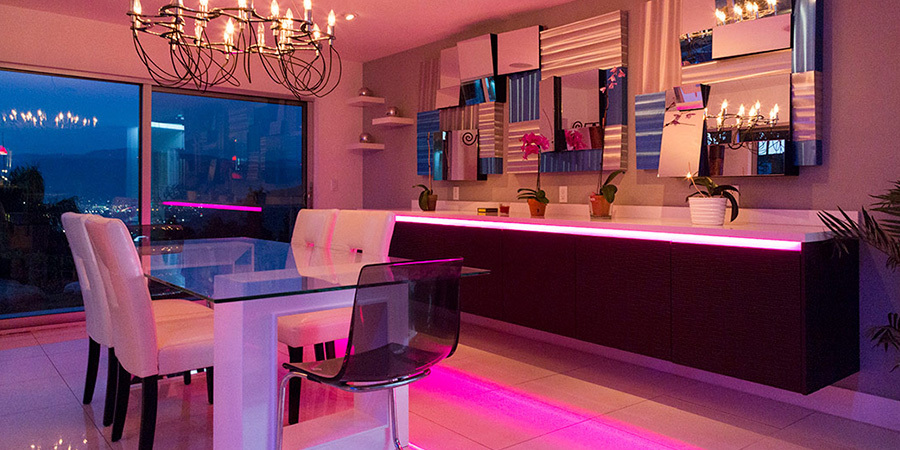
Some people avoid using colored or RGB color-changing lights to highlight objects or niches because the color can tint or change the appearance of what you’re trying to showcase. Have you ever noticed how UV light affects colors, making them appear neon-like?
That said, for special occasions or festivities, they can be perfect. In these cases, it’s about themed highlighting, where the specific details of the object matter less than the overall effect of the light. For example, shining red or amber decorative lights on pumpkins for Halloween, or green accents at the base of a Christmas tree, is a completely valid use of accent lighting.
How to Add Accent Lighting to Your Home
Once you understand how LED accent lighting works and the features that make it possible, it’s time to move on to this straightforward step-by-step guide to bringing it into your home:
1. Identify the Focal Point in Interior Design

Are you planning to light up your kid’s posters? Or maybe your turntable and vinyl collection? Whatever you’re hoping to highlight with your accent lighting is called the focal point of your lighting design. When picturing it, try to imagine how it’ll look in your space—or chat with a lighting design expert to bring the idea to life.
The LED Accent Light Applications Homeowners Love Most
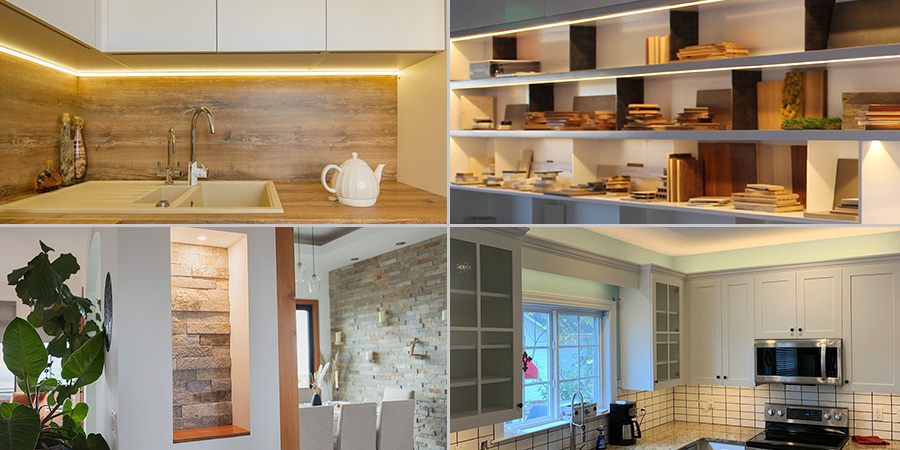
- Under-Cabinet Lighting: Mounted above kitchen countertops, workbenches, or home office desks—perfect to highlight appliances, keyboards, and knick-knacks.
- Shelf Lighting: Installed along shelves to showcase books, collectibles, or decor items, often seen in living rooms, offices, or display cabinets.
- Wall Niche Lighting: Installed inside recessed wall niches to spotlight handicrafts, sculptures, or textiles in hallways, living rooms, or entryways.
- Above-Cabinet Lighting: Installed on top of cabinets to cast light upward and draw attention to ceiling features or objects placed there, often in kitchens or living rooms.
2. Find the Best Lighting Products for Your Accent Choices
It’s always a good idea to work with a company that not only offers premium warranties and products but also truly understands decorative lighting. Flexfire happens to fit that description perfectly, with these accent favorites worth checking out:
LED Strip Lighting
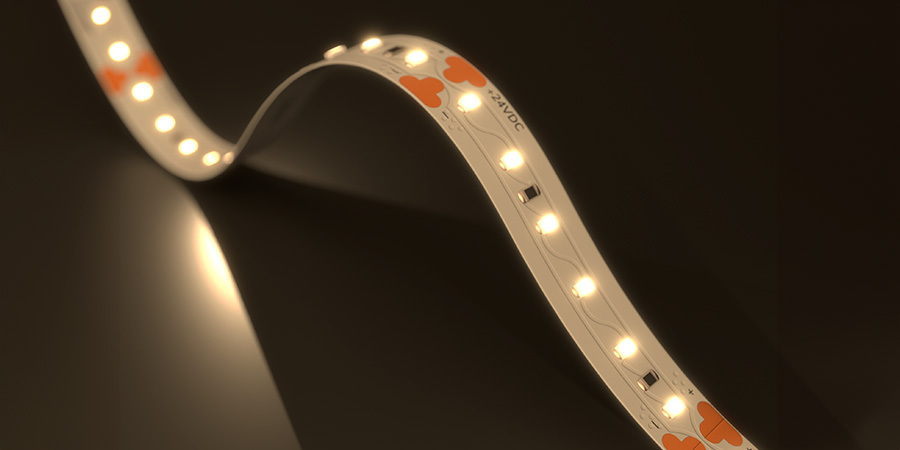
If you’re going for an ultra-subtle glow, our Outline™ LED strip is perfect for smaller focal points or pieces with less intricate details. For a bit more punch or more complex features, our Accent™ strip collection offers more brightness and an exceptionally high CRI.
LED Light Bars
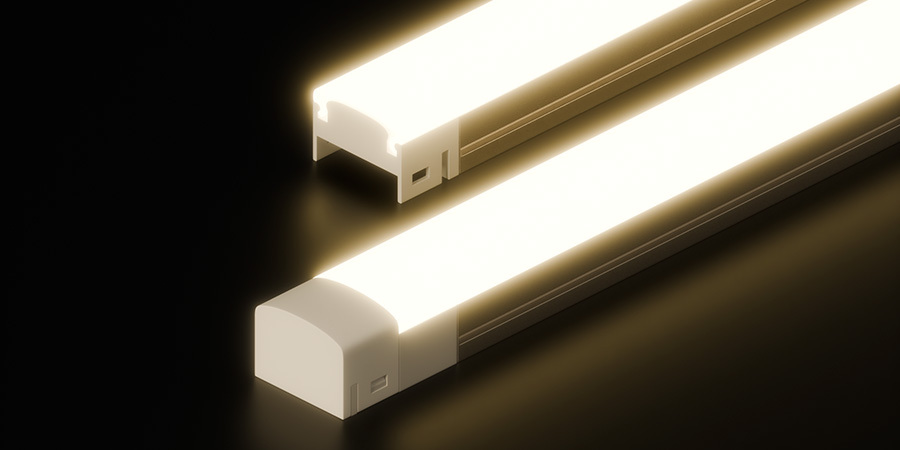
With their linkable design and hands-free control options, our ClickBright™ line makes it easy to create custom displays of the things you love, perfectly tailored to your layout.
LED Puck Lights
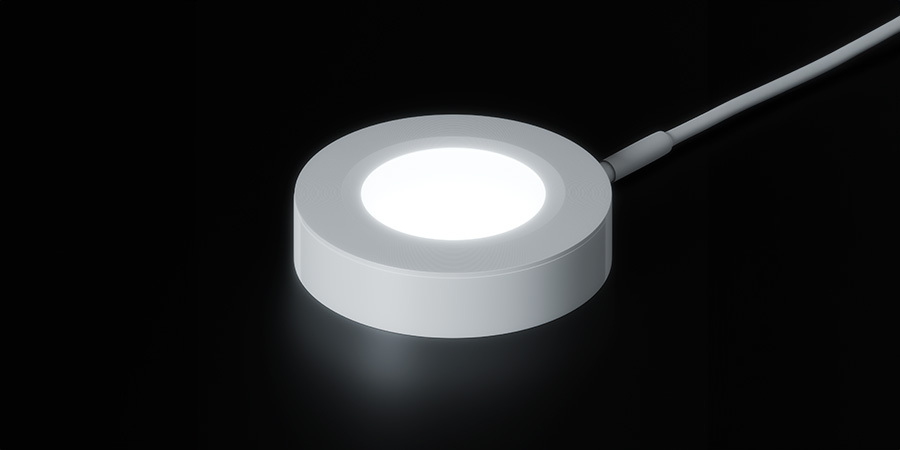
Finally, our recessed or surface-mounted Victory™ fixtures, with their spotlight-like precision, are ideal for shelves or surfaces where you want to highlight individual objects.
3. Complete Your Look with Layers of Light
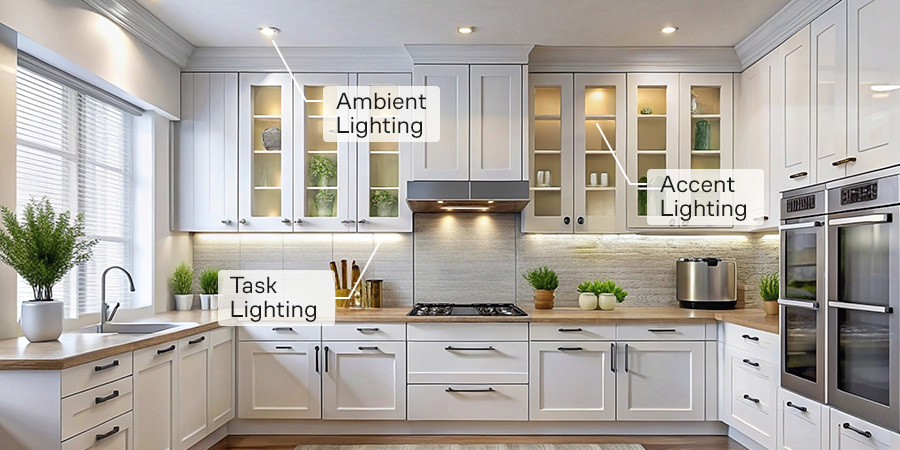
Remember, your accent lighting plan—which covers everything we’ve discussed, from the objects you want to highlight to the applications and products you choose—needs to fit into a broader home design scheme. Accent lighting is just one of the three layers of lighting that work together to create a cohesive space.
The other two layers are: task lighting, which provides clear, focused illumination for everyday activities, and ambient lighting, the main illumination in a room that, unlike the other two layers, isn’t focused on a specific point but spreads evenly throughout the space.
Flexfire: Always Putting the Accent on Your Success
At Flexfire, we believe results speak louder than theory. We put into practice the same lighting knowledge we share with you—because our goal is to inspire confident, informed choices for your accent lighting projects at home.
Before wrapping up, we’d love to share a couple of success stories from homeowners like you. After all, when you look for small details through accent light, you often end up finding big changes in the way you live:
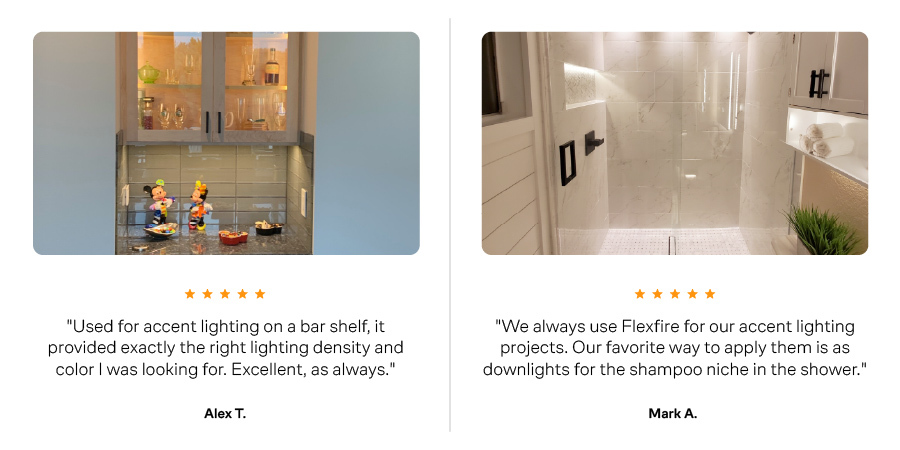
Looking to start your accent lighting project? Do it the easy way with our time-saving Project Builder, which guides you through everything you need with just a few simple questions about your accent lighting plans!
